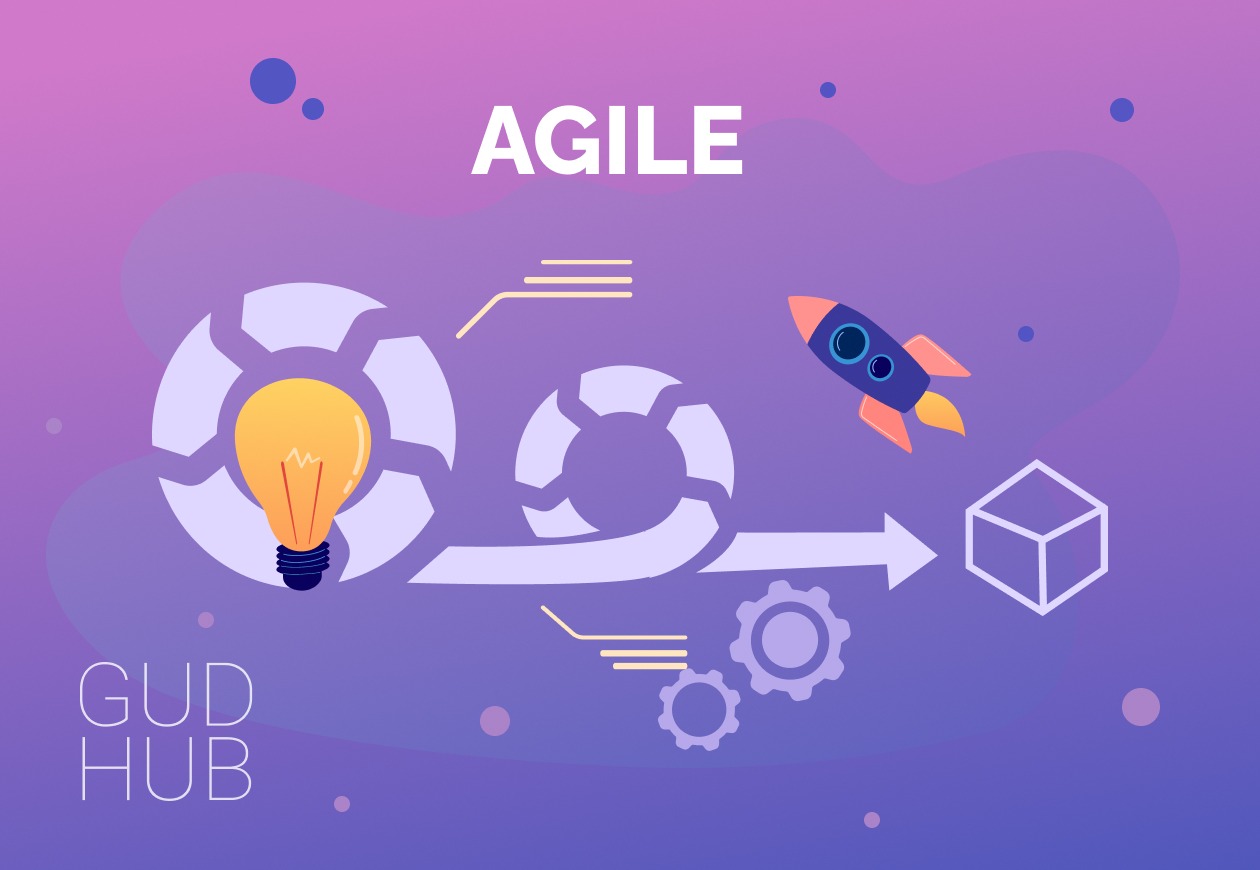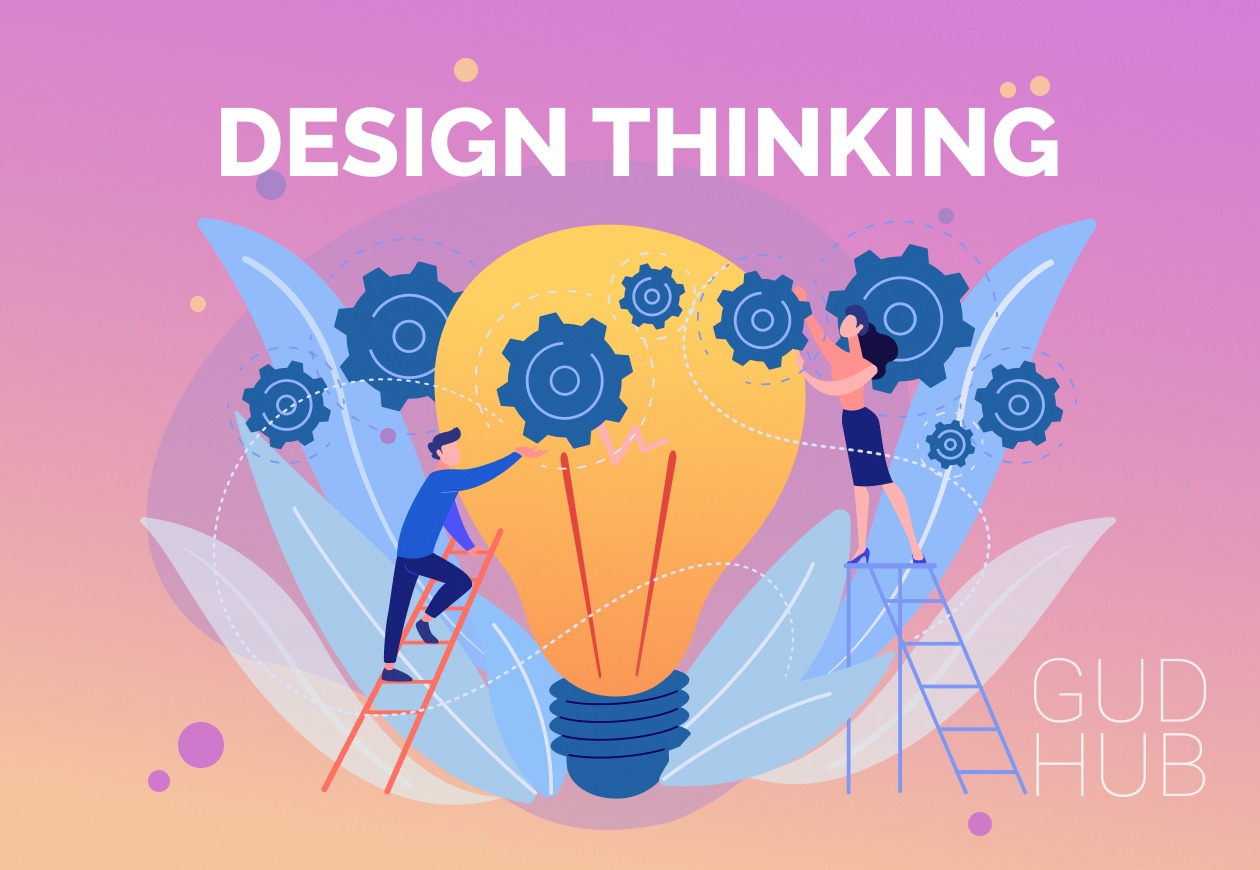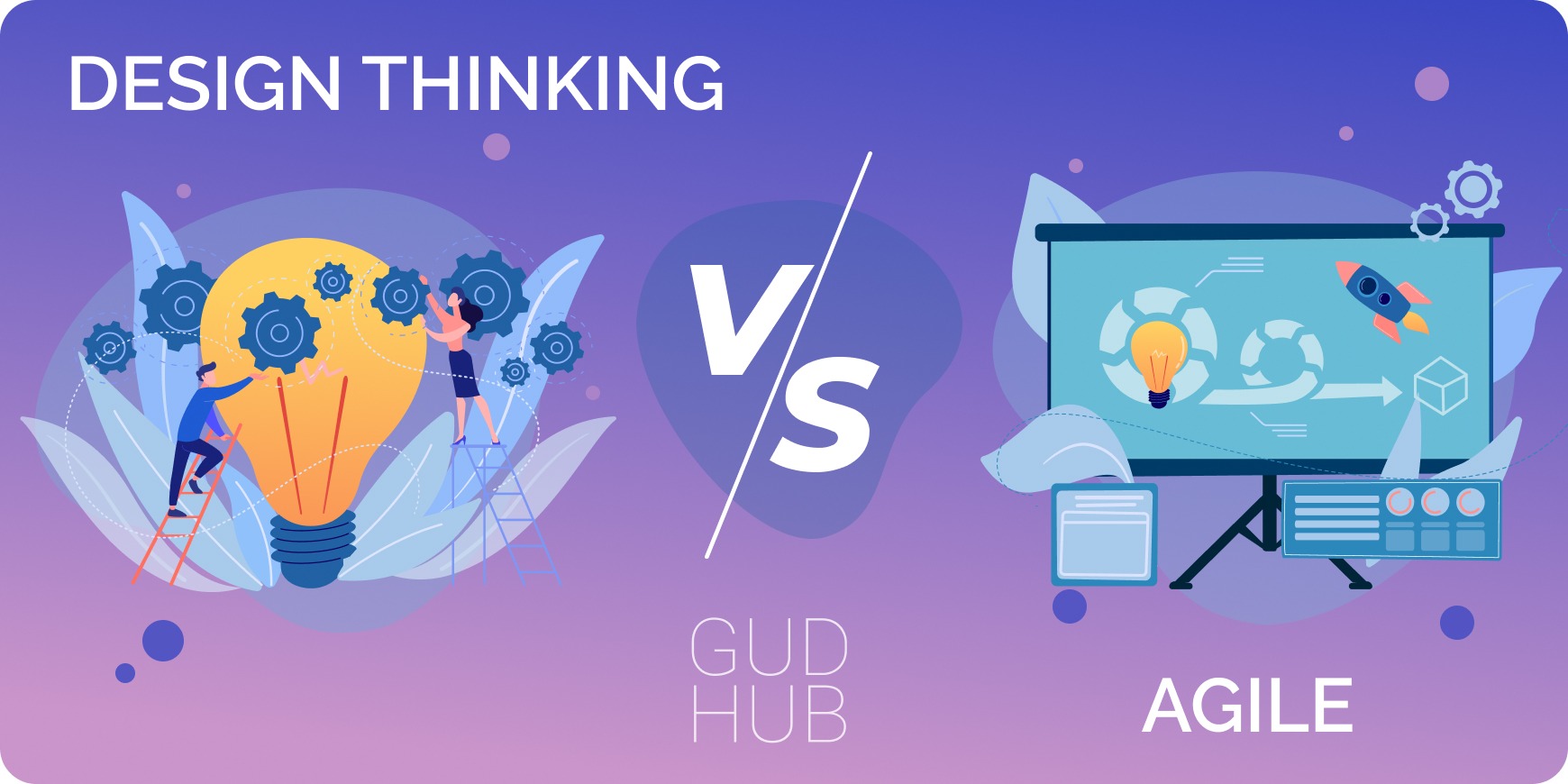Design Thinking and Agile: is it the best option?
Agile and Design Thinking Intro
In software development and project management, agile methodologies and different approaches are gaining momentum and commitment. This is not surprising, given that often the use of such methodologies makes a project successful. Indeed, many IT companies are faced with the problem that some projects do not meet the client's promises and do not meet his needs. Adopting a unified methodology can solve this problem.
Companies looking for more customer-facing innovation methods frequently employ one of two concepts: Agile or Design Thinking. Agile problem-solving enables you to succeed by increasing team productivity by as much as 28%. Design Thinking methodology eschews traditional development processes in favor of an agile method of developing products and services with a unique customer focus. Over the past five years in the tech industry, large companies have used their own versions of this process, from Google to IBM.
Agile and Design Thinking are the same in their philosophy: collecting customer feedback and taking an iterative design approach that inspires ideas, helps teams avoid mistakes, and leads to better, faster, and great products. However, what is the difference between Agile & Design thinking, which and when to use, and it is worth choosing between them? Read on for answers to these questions and a more detailed design thinking definition and explanation.
What is Agile?
Let’s remember some facts about Agile. Agile is a way of working based on iterative development, phased delivery, and ongoing product re-evaluation. Since it is mainly used in software development, Agile thinking is based on a clear understanding of the product concept and its market.
Contrary to the idea of focusing on the set of features that need to be developed, Agile focuses on the most valuable features first. Agile problem-solving is all about getting tangible work results after every iteration. According to the 12 Agile Manifesto principles: "Running software is the main indicator of progress." Prepare a draft and then edit it according to the editor's suggestions. Never deliver the whole thing at once!

Each Agile framework, such as Scrum, Kanban, XP, and others follows these Agile main principles, including the one about customer satisfaction through timely and continuous delivery of valuable software.
This gave developers a new project management environment in which they could freely test new ideas, new opportunities to gauge user reactions and change the project plan in response to their feedback.
Although the fundamentals of Agile Project Management come from the same theories and practices that define design thinking, you should not confuse this concept with agile design. Design Agile is one of the phases of theAgile software development life cycle when the software overview is being developed directly. The agile design process is a way to understand an Agile development idea or methodology, how it works, how work is done in that, and all other required areas. What is design thinking, we will figure it out further.
What is Design Thinking?
Now, let’s define “design thinking”. Design Thinking is a method of identifying real-world problems that need to be solved and then finding more effective and innovative solutions to directly address that problem. In other words, design thinking is thinking outside the box - your usual norms and assumptions, going beyond the existing stereotypes and the usual ways of solving a difficulty.

The design thinking process has five steps that give users a framework to interact with customers, stimulate creativity, and repeat solutions for the best results. Each of the steps is independent of the next step but follows from the previous step.
Remember the main Agile principles mentioned above? Replace the word "software" with the problem you're trying to solve, and you have the ultimate design thinking principles and a ready-made foundation for any good project. Instead of accepting the concern as given, investigate it and its context. You can rethink or restructure a given concern to arrive at a concrete definition of the concern and propose a strategy for solving it.
The design thinking model includes processes such as context analysis, finding and shaping concerns, generating ideas and solutions, creative thinking, prototyping, testing, and evaluation.
Key characteristics of design thinking approach:
- act in accordance with task-oriented strategies;
- adopt and use productive reasoning;
- use non-verbal, graphic/spatial modeling tools.
If you want to get a successful project, just follow the next design thinking process:
- EmphasizeEmpathy - a person tries to put himself in the user's place, to feel and understand his desires, motives, and needs. This is the main quality of design thinking since first you need to see the essence of the problem through the eyes of a person who encounters it regularly, but at the same time maintains a critical perception. The design thinking methods in this stage are observation and interviews.
- DefineOrganize the information you get through empathy, analyze the observations, and highlight the user's key problems. The purpose of defining is to formulate a question to which you will seek an answer in the next step.
- IdeateAt this stage, you need to use creativity to generate as many ideas as possible to solve the problem. The goal is not to find the "right answer", but to create a host of opportunities and alternatives. Tools: brainstorming, mind mapping, drawing. There is no framework at this stage.
- PrototypeHere the task is to test the performance of ideas in practice. It is enough to make a budget version of the product with functions that will help solve the indicated problem.If the prototype is successful, proceed to the next step. If not, try to identify the problem again. Answering questions is a clear and versatile option that works on all platforms. The user selects the desired question, and the answer is already on the screen.
- EvaluateDesign thinking is about finding the right things. Test the finished product to evaluate the best solutions developed during prototyping. Here it is very important to record the feedback about the product as fully as possible, for which questionnaires, videos, etc. can be used. Testing helps not only to develop the prototype but also to revise the results of the empathy stage and understand how users use the product and what they expect from it. It also entails generating new ideas. But most importantly, this stage ensures maximum user involvement in product development.Although this is the final stage, design thinking is an iterative process: use the test results to identify and solve other problems. This can be done through customer feedback.It should be noted that the relationship between the design thinking phases is not strictly linear: from almost every stage, you can return to the previous one, as well as to the earlier one.
Design Thinking vs Agile: which solution is the best?
Agile | Design Thinking |
Prefers to create working software. | Contributes to the creation of user interface layouts, sketches, and similar visual artifacts. |
Agile focuses on delivering value. That is, creating a working product that customers can use and benefit from immediately. | Focuses on the discovery of value. That is, to decipher what people really want. |
An Agile process has 5 phases: 1. Concept 2. Inception 3. Iteration 4. Production and testing 5. Retirement | The Design thinking process consists of 5 elements: 1. Empathize 2. Define 3. Idea 4. Prototype 5. Test |
Talking about Agile vs design thinking, you do not have to choose between them. Instead, the best solution is to use such a formula as Design thinking + Agile.
Agile and Design Thinking methods contain principles, frameworks, and a defined set of roles and actions. Used thoughtfully, these two approaches can help teams align and deliver solutions that drive growth and deliver new value to consumers.
Agile development is a process that relies on close collaboration with customers to respond quickly to market changes. The goal of agile thinking is to quickly get to the market and make improvements, sometimes continuously. When it is done properly, customer satisfaction is the top priority.
However, if Agile teams over-focus on incremental improvements, they may overlook the impact of their iterations on the customer experience. Design thinking methodology can help in this situation. Design thinking is an agile process, a methodology for finding simplicity in complexity, improving the quality of work with designed products, and satisfying customer need by solving the target problem they face. The purpose of the design thinking model is to find a solution that meets the real needs of users.
- These processes look for information outside the team doing the work. It can be both user stories, backlogs, metrics of success and business needs, user research, and technology opportunities.
- Both processes also involve iteration and continual refinement.
But if there are so many similarities between design thinking and agile, you may ask: is design thinking another name for an agile manifesto? The answer is No. Design Thinking and Agile manifesto share similar policy, but it isn’t the same things.
The agile method allows you to take into account all the needs of customers, to make the product most consistent with their wishes and, thus, successful. Design thinking helps to find innovative solutions that do not lie on the surface, saving time and money. You can personally see that both methods work well together. See how the GudHub Low-code platform combines the tools required for successful project implementation.
Outcome
Most industries trying to solve customer problems and satisfy their needs fail just because they look at problems from the outside. However, many problems can be better solved if we look at them from the inside. Using agile methodologies paired with design thinking can help. Agile development is a proven tool for moving quickly from idea to implementation. When agile processes are at the core of continuous development, then design thinking becomes even more important because it preserves the product even with constant iteration.
In this article, we have told you what is a design thinking process, given you a design thinking definition, reminded you what Agile is, and explained why Agile vs Design thinking works together better.


